There’s no palookas in this bout, folks, only two young fighters thirsting for glory! On the left, weighing in at 4,435 lbs, the Spiked Smasher, Cuff! And on the right, weighing in at 4,501 lbs, the Destroyer of the Dunes, Clout! Who will emerge victorious?
Now the competitors are circling each other and growling. No love lost between these two! Clout delivers a hard right to Cuff’s flank, but Cuff responds with a left to Clout’s shoulder. They’re on the move now, they’re shuffling across the dunes side by side, and they’re exchanging blows as they go. This is so exciting! Back and forth, back and forth they go, each one trying to outpace the other! Wait a minute, wait a minute, Cuff pulls slightly ahead of Clout, Cuff winds back, Cuff swings, and boom! Direct shot right to Clout’s noggin, right above the eye, and a beauty! Clout is reeling a bit now, Clout stops, and hold on, yes, Clout is veering away! Clout is quitting this match, folks! And that means that our winner is Cuff! Give him a big hand, folks, he’s earned his victory!
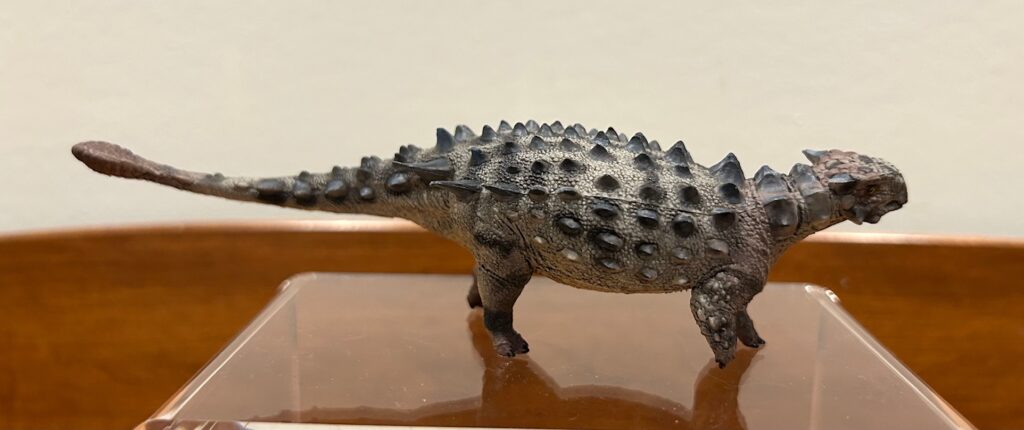
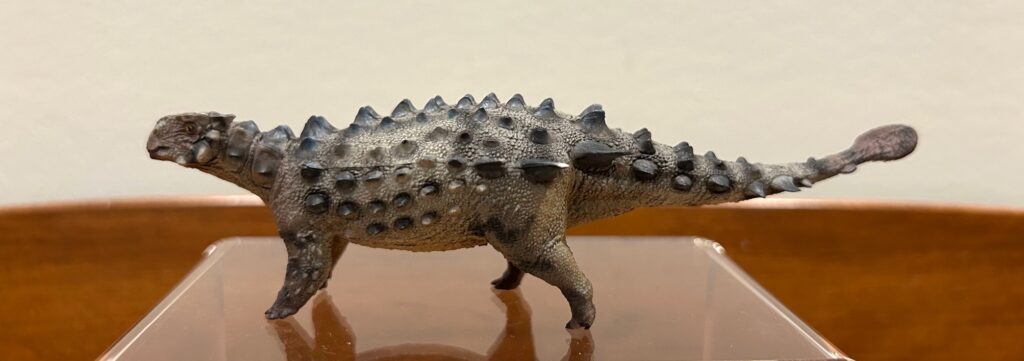
Saichania, the “beautiful one,” is one of Asia’s most famous ankylosaurs and the one with the most toys to its name. The holotype specimen was discovered in Mongolia during the 1970s and consisted of the skull and a decent portion of the front part of the skeleton, and largely articulated at that. Moreover, the bones were particularly well-preserved, hence the genus name. Saichania is estimated to have been 5 to 7 metres long and weighed 1.5 to 2.2 tons. It lived around 73 million years ago alongside other ankylosaurs like Tarchia and Zaraapelta as well as its main enemy, Tarbosaurus.
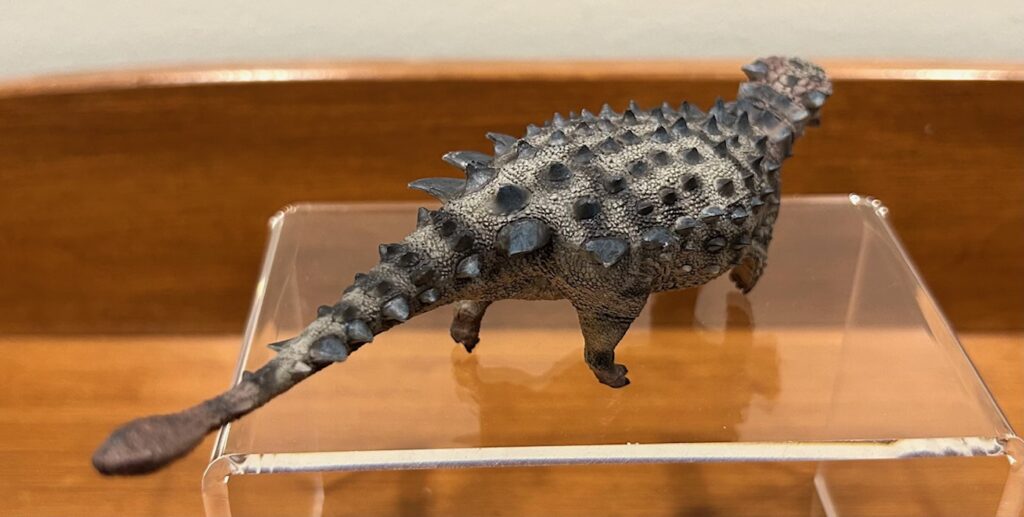
Here we’ll be examining Haolonggood’s “Zhu Gui” version of Saichania, the other being “Zhu Fu.” I call him Cuff. At only 15 cm in length, he is the smallest ankylosaur they’ve made to date. He is sculpted in a walking pose with his right front leg in mid step and his left hind leg extended back. His tail is swinging to the right and his head is raised and cocked to the left. Unlike the Gastonia, he doesn’t appear to be geared up for combat at all; he looks relaxed and casual. One can easily envision him marching slowly and steadily across the desert dunes, on his way to a distant oasis.
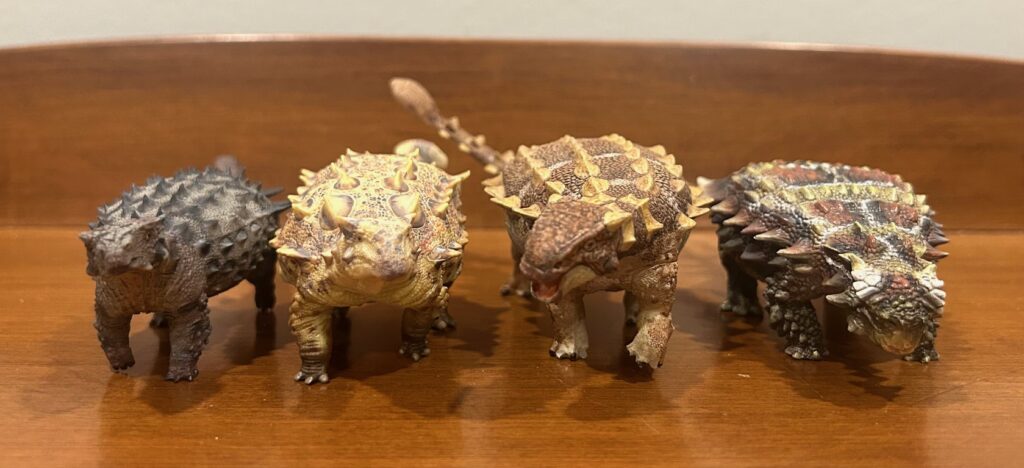
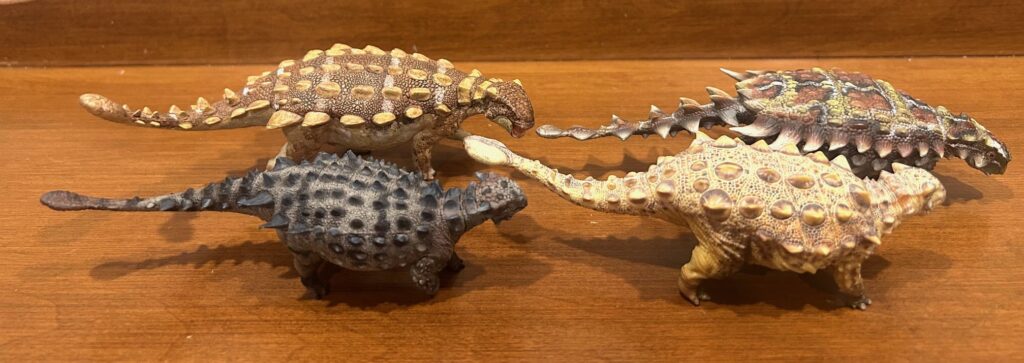
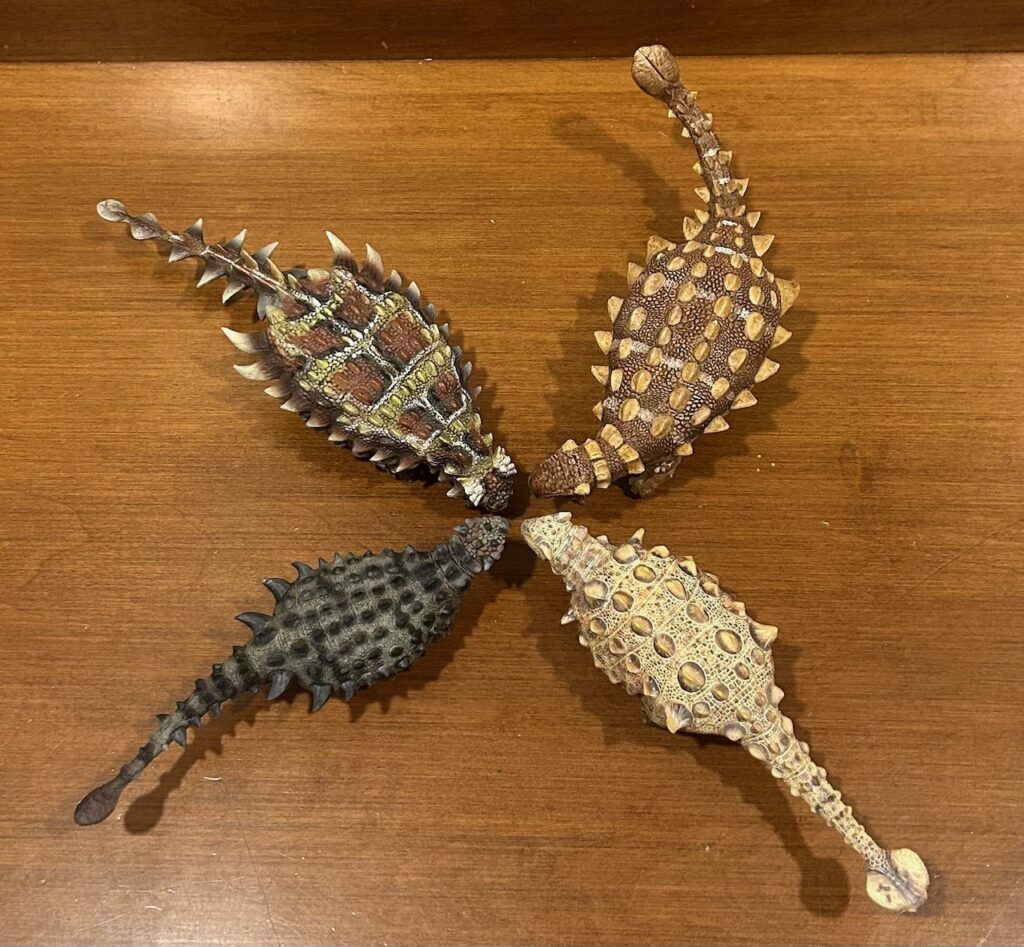
Also unlike the Gastonia, Cuff’s paint job is decidedly drab. His main colour is medium grey with a dirty beige underbelly. His back features black stripes and very dark grey scutes. Medium brown is applied to his tail club, to the top of his head, his beak, and his feet. His claws are black and his eyes are yellow. Again, it’s drab, but it also looks very plausible. Unfortunately, not all of the scutes on Cuff’s back have been painted properly, particularly on his left side. Which actually is like the Gastonia!
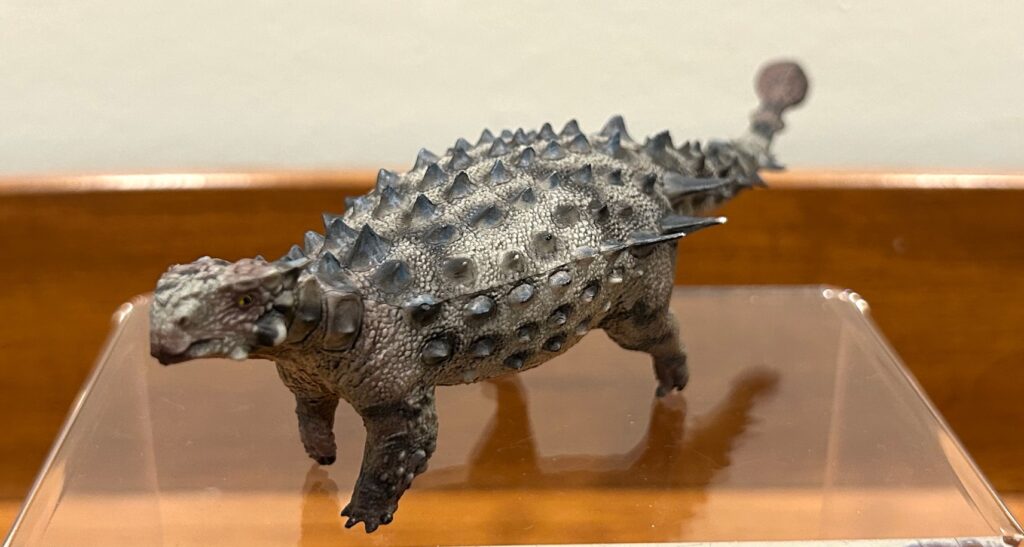
Like any good ankylosaurid, the top of Cuff’s wedge-shaped skull is covered in protective plates. The squamosal horns, the quadratojugal horns, and the anterior and posterior supraorbitals are all clearly visible and look to be correct. The nuchal crest, however, ought to be larger, as shown on specimens D and E in this diagram, and the beak should look pointier in profile. On the plus side, Saichania possessed particularly large and complex nasal cavities, which are thought to have been special adaptations for living in a hot and dry desert environment, and these are properly reflected on Cuff.
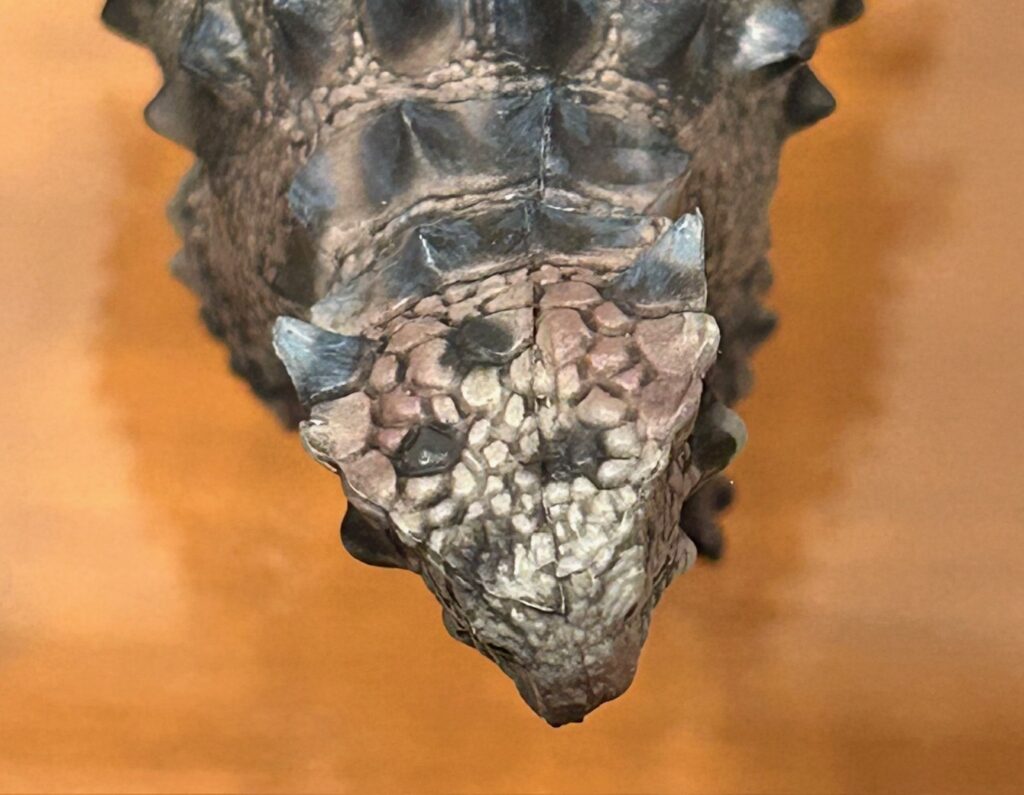
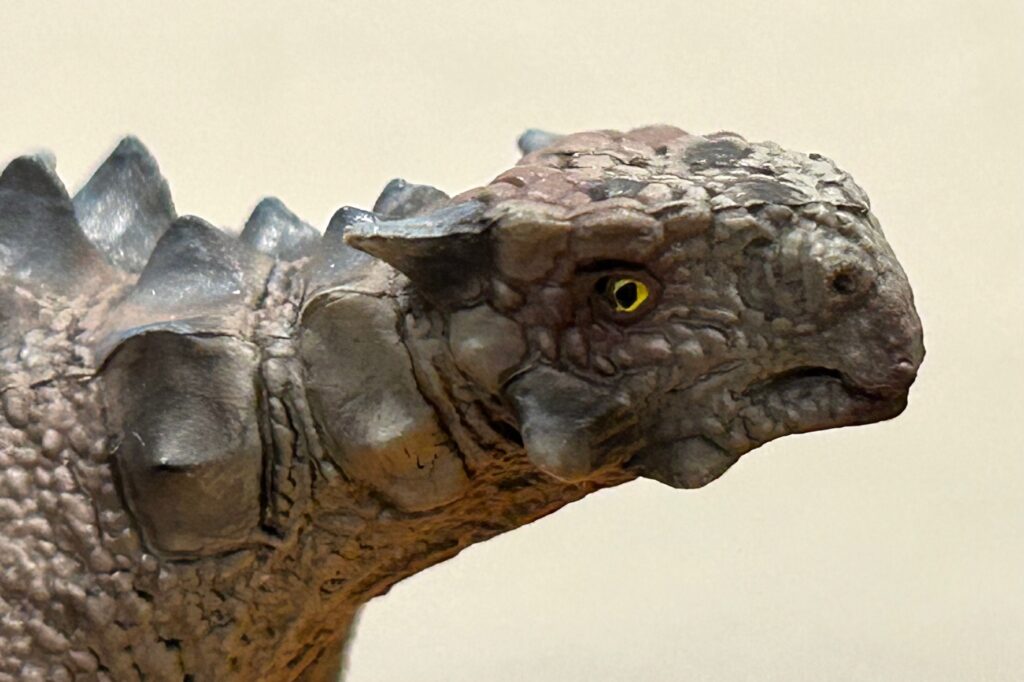
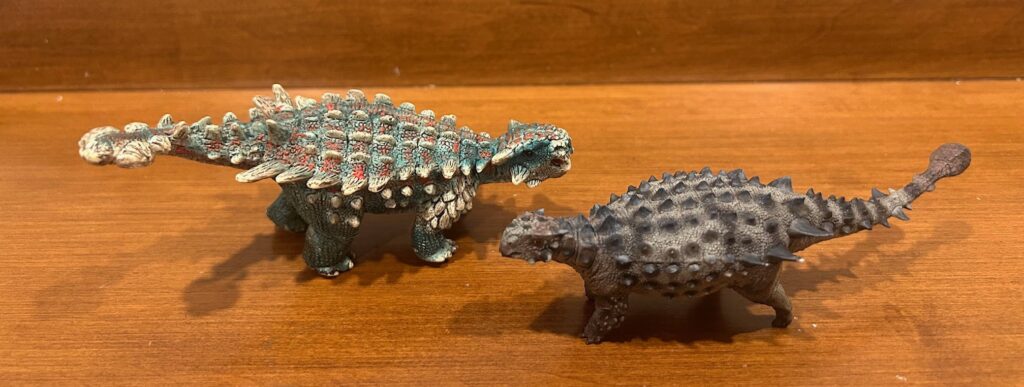
Cuff’s neck is correctly covered by two cervical rings each made up of six thick, keeled plates, with the largest ones at the sides, and his stout front limbs are covered in small osteoderms. His back and his flanks are awash in rows of keeled osteoderms. A series of large, flattened, and blade-like spikes jut out sideways around his wide hip region, making it difficult and dangerous for predators to bite at his unarmoured hind limbs. His long tail is ringed with further osteoderms and, of course, terminates in a sizable oval-shaped club with a pitted texture. It all appears to be in keeping with current restorations of Saichania‘s armour.
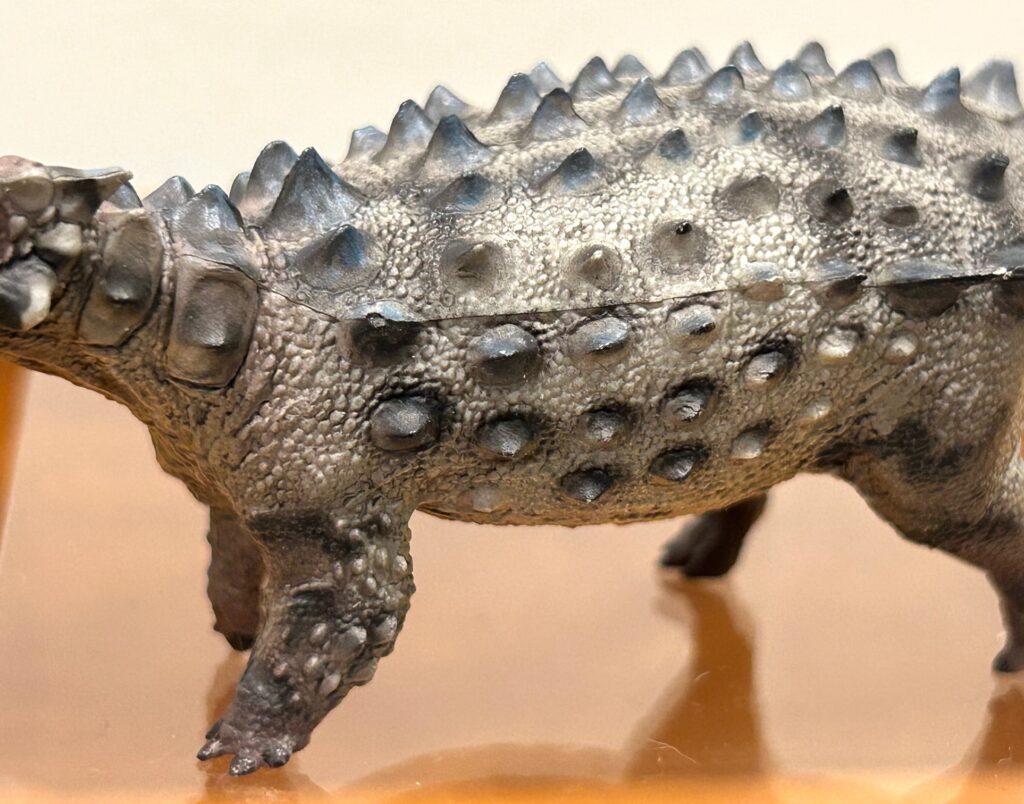
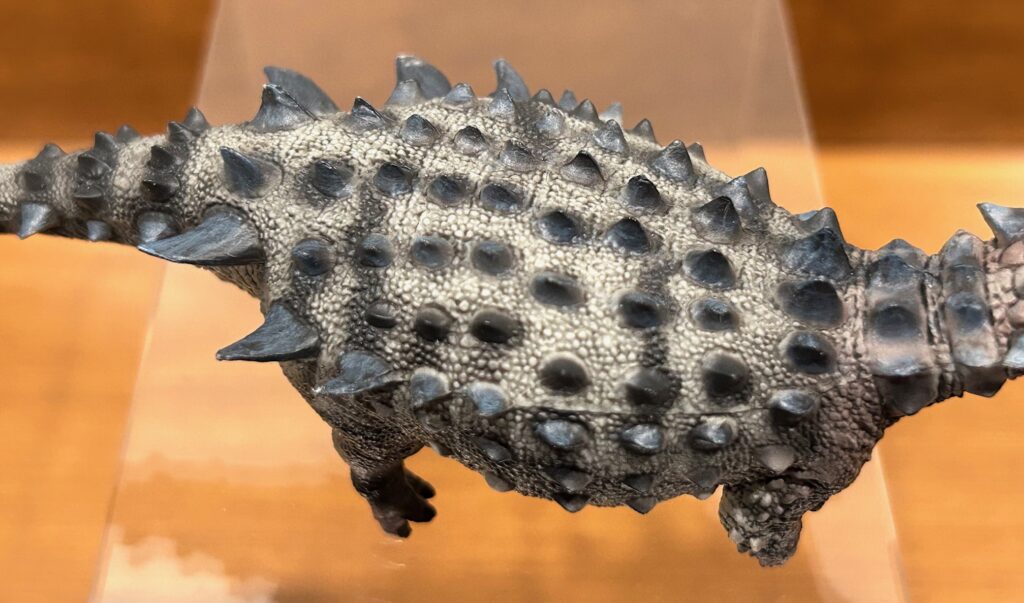
Lots and lots of small rounded scales have been meticulously sculpted between all the osteoderms, and on Cuff’s limbs and underbelly. Thick wrinkles are also visible on his neck and at his joints. He is a most muricate monster indeed, to the point where it hurts to squeeze him too hard in your hand. It would take quite a powerful and determined Tarbosaurus to overcome these defenses!
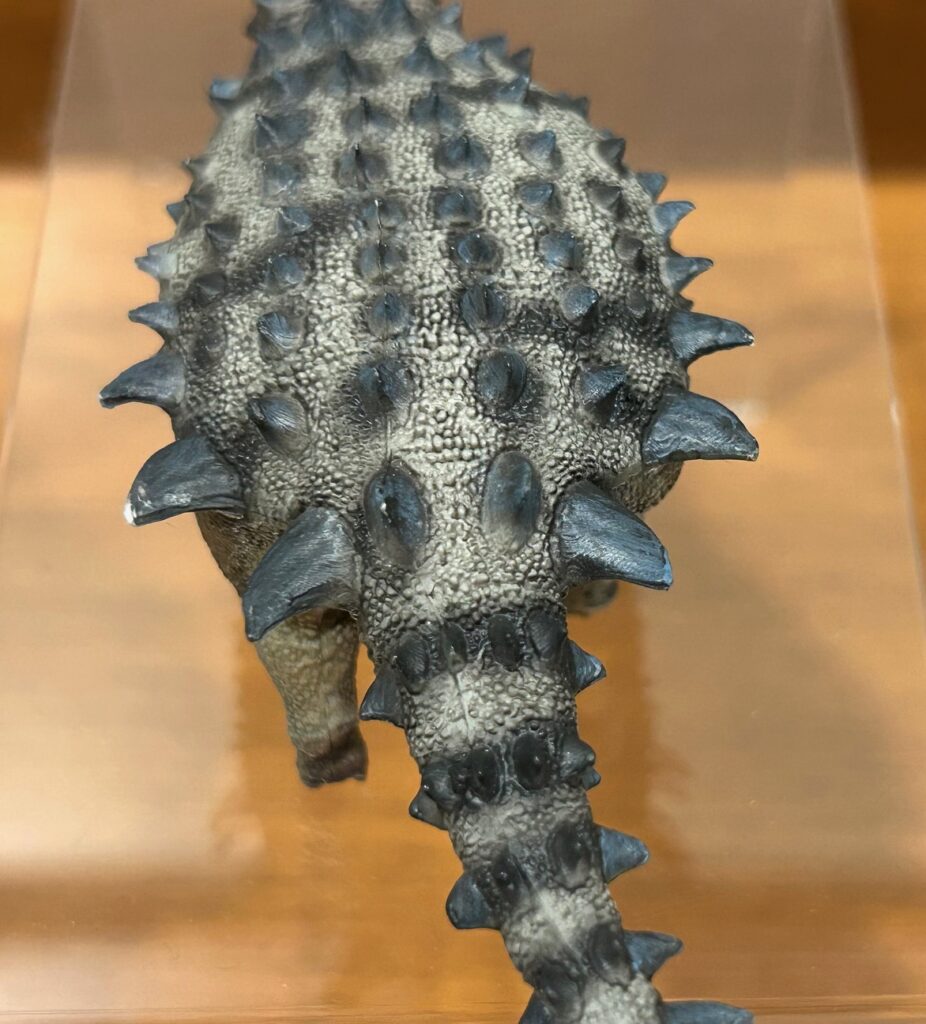
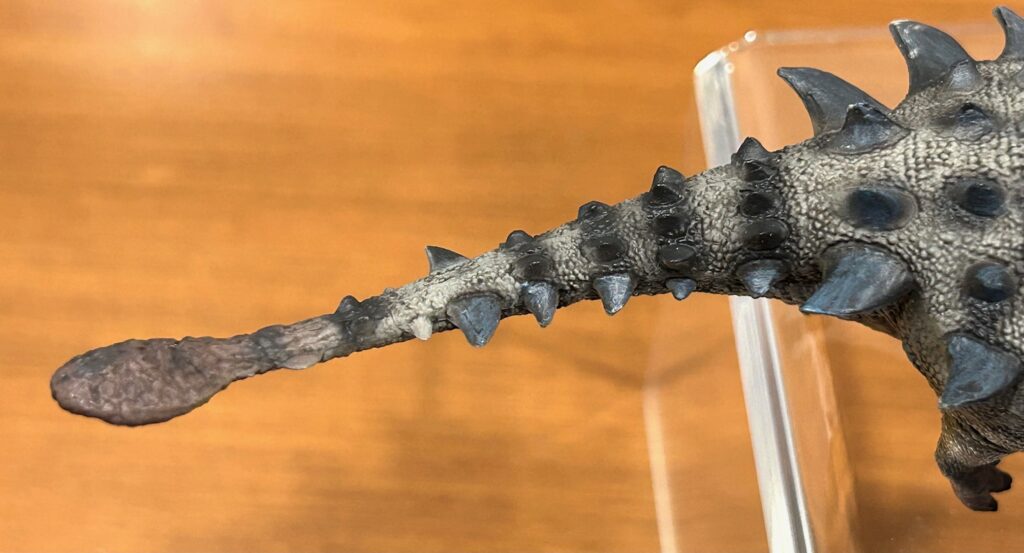
Haolonggood’s Saichania is not devoid of flaws, but they’re pretty minor ones. This is a beautiful, exquisite toy overall, and hands down the best representation of the genus currently available on the market. I’m very happy to have it in my collection and I can’t wait to see what other ankylosaurs the company has in store for this year. Tarchia would probably be at the top of my preference list, but Ziapelta, Scolosaurus, and Anodontosaurus would also be fantastic.
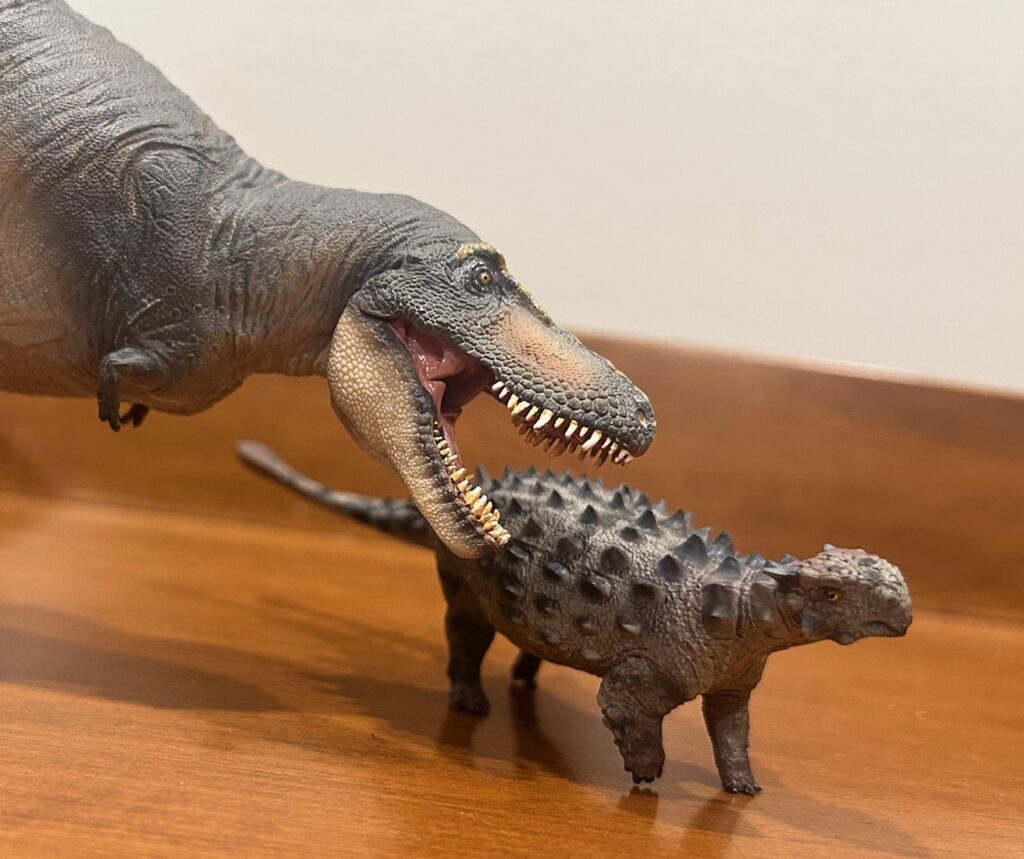
Disclaimer: links to Ebay and Amazon on the DinoToyBlog are affiliate links, so we make a small commission if you use them. Thanks for supporting us!




Pretty – like all HLG figures are – but a bit too small for my own taste. Maybe for the 1:40 collection.
The Vitae and PNSO Ankylosaurs are my favorites (Vitae for design, PNSO for SIZE).
Still hope that HLG will eventually do a “Maximum Tarchia” figure on par, size-wise, with the PNSO Anky.
Great review of a great figure. 5 stars!
Thanks!